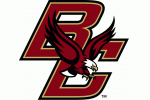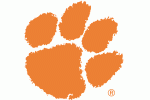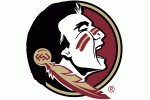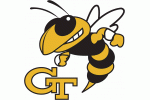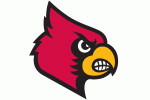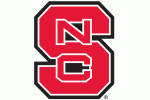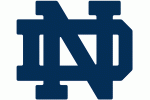These additions and transfers will make the Deacs far more efficient from behind the arc next year.
 If you somewhat subconsciously got excited for the 2016-17 Wake Forest basketball season these past few weeks you are not alone. After seeing the staff miss out on a few priority targets in the 2016 class and anticipating serious difficulties with recruiting following a 2-16 ACC season, I’m sure I wasn’t the only one surprised to see that Danny Manning went 2 for 2 on top grad transfer targets last week.
If you somewhat subconsciously got excited for the 2016-17 Wake Forest basketball season these past few weeks you are not alone. After seeing the staff miss out on a few priority targets in the 2016 class and anticipating serious difficulties with recruiting following a 2-16 ACC season, I’m sure I wasn’t the only one surprised to see that Danny Manning went 2 for 2 on top grad transfer targets last week.
Not only do both Austin Arians and Matt Williams provide much-needed experience and consistency, they also have been perimeter threats for their respective schools all three years they have played. It’s no secret that Wake Forest was truly dismal from behind the three point line last year and addressing this in any way possible was an absolute must this offseason. I’m here to say not only will Wake Forest be more efficient from deep in 2016-17, but may make the biggest shooting improvement of any ACC squad next year. Let’s look at some stats and analyze how that may be.
First of all, here is a list of Wake Forest teams’ three point shooting percentages since the Dino Gaudio years. Note: Look away if you’re squeamish.
/cdn0.vox-cdn.com/uploads/chorus_asset/file/6409471/Screen_shot_2016-04-29_at_3.51.45_PM.0.png)
Last year was by far the worst Wake Forest three point shooting team in the last decade and was only a few dozen better than the worst in the entire nation. Arkansas State and Mt. St. Marys were the two teams on either side hugging the Deacs in 3PT percentage last season. Not exactly the company you want to be around.
However, you don’t have to do substantial research to understand why Wake struggled so significantly from range last year. The team had virtually three shooters on the entire roster (Mitoglou, Wilbekin, and Crawford) and one of those is a volume shooter who is always going to have a lower percentage than the impact he actually has on a game.
Having only 3 decent three shooters is one problem, but having two more guys who feel obligated to shoot from behind the arc but can’t is a whole other dilemma in itself. Cornelius Hudson was a subtle 26.5% from 3 on 83 attempts even though he missed a fair amount of the season due to his suspension/dismissal. Codi Miller-McIntire upped his efficiency to 32.6% from 3, but that still isn’t an ideal percentage for one of your primary ball handlers to have. Add in the fact that Rondale Watson and Trent Van Horn went a combined 10 for 41 and you have a team that didn’t scare any opponents with what they could do from behind the arc. Tweets like the one below by AP columnist Aaron Beard were a 140 character count summary of the season.
Man, Cornelius Hudson has taken 3 bad shots this half for Wake.
— Aaron Beard (@aaronbeardap) December 16, 2015
The poor shooting percentage not only leads to a lot of possessions without any points, but it also lets the defense play much less aggressive on the perimeter and allows them to collapse on the interior without much worry. The latter part of that sentence is probably most significant, because when your best player is a back-to-the-basket post player (Thomas) and the defense feels comfortable crashing without consequence, you have a recipe for a tough season. Wake needed a Coron Williams last season; instead, it got a team that failed to produce a 35% 3-point shooter for the first time this century. (Table below: Min. 20 shots to be qualified)
/cdn0.vox-cdn.com/uploads/chorus_asset/file/6409531/Screen_shot_2016-04-29_at_4.05.38_PM.0.png)
But is the poor three point shooting trend here to stay or destined to change next season? If you look at the incoming talent Danny Manning has collected, all signs point to a massive improvement.
Keyshawn Woods is finally eligible to play a game in the Black and Gold and will help out tremendously in spreading the floor. As a true freshman, Woods led Conference USA in 3PT shooting (46.6%) on nearly 100 attempts for the season. That was good enough for 21st in the entire nation in 2014-2015, and if Chase Fischer, Tyler Cavenaugh, and Bill Moto have taught us anything, it’s that a redshirt transfer season can have a profound impact on a player’s development. Will he shoot upwards to 50% in the ACC next year? Probably not. But having a guy who you can rely on to hit 40+% of his threes is extremely valuable and should be expected of the Charlotte transfer.
Transfer Keyshawn Woods led Conference USA in 3-point shooting percentage last season.
— Wake Basketball (@TieDyeNation) June 16, 2015
MORE: http://t.co/rrFY874fZY pic.twitter.com/6XyF9Q0ZsT
With Woods likely slotting into CMM’s role at the 2, you can immediately see an upgrade in shooting at the position. As for the other wing spot, Austin Arians and Matt Williams are both equally experienced and able to knock down shots from the perimeter. Arians shot 35% on nearly 7 attempts a game last year and takes the majority of his shots from behind the arc.
In 13 games for Milwaukee last season he had three 3’s or more, and in 5 games he had at least five 3PM. One of his best games last season actually came against an ACC opponent in Notre Dame, scoring 19 points on 5-7 shooting from range in a close 8 point loss to the Irish. As a senior who’s has played in a lot of big games in his career, I’d expect the staff to trust Arians with some important shots throughout the season.
/cdn0.vox-cdn.com/uploads/chorus_asset/file/6409581/Screen_shot_2016-04-29_at_4.18.33_PM.0.png)
Matt Williams was the 2nd grad transfer last week to commit to the Demon Deacons, and while his numbers don’t pop off the page immediately, I’d like to point out a few facts about his 2015-16 season. Williams takes a large majority of his shots from 3 (76%) so the low overall field goal percentage shouldn’t be that alarming. One could say that his three-point efficiency this last year (33%) was nothing more than average, but if you look at his season as a whole, it really was a few outlier games that caused that.
In his final 7 games of the season, he went 7 for 45 from three, but still found other ways to score points as he got into double figures three of those contests. Those final seven games alone brought him down 6 percentage points in 3 shooting, much of that probably due to tired legs at the end of a season after sitting out virtually all of 2014-15 due to injury. With an extra offseason to rest and develop, hopefully Williams can be a 36-37% shooter in the league and a three-point specialist when needed.
Graduate transfer Matt Williams from UCF to join the Deacs in 2016-17.
— Wake Basketball (@TieDyeNation) April 27, 2016
INFO: https://t.co/sxpz5nwrqi pic.twitter.com/ZiaQNWNfzC
Those three transfers should have a profound impact on the Wake Forest offense, but they aren’t the only additions that should help on the perimeter. All scouting reports have noted that one of Brandon Childress’ best attributes is his ability to score in a variety of ways, and while I would expect the majority of his points to occur attacking the basket, I do believe his shooting ability will be useful throughout the season as well.
2016 PG Brandon Childress showing why Wake Forest was smart to nab him early. Speedy lead guard who can also score the rock #Elite32
— Future150.com (@Future150) July 11, 2015
Richard Washington is the 2016 commit most praised for his stroke in the incoming class, and his range will be the main reason he finds minutes next season. In multiple games his HS senior year year he hit five threes or more and his highlight tape shows his knockdown ability from a variety of spots behind the arc. I suspect Washington will get the majority of his shots off the pass (Ie. Wilbekin) than from his own dribble (Ie. Crawford), but as long as Wake can find ways to penetrate the defense those opportunities should be available to him.
Richard Washington @classof_hisown on fire here in the first half at Greenbrier Christian. He's hit 7 threes and has 25 points at the half!
— BigTimeHighlights (@BigHighlights) February 10, 2016
These five additions alone make the lineups that Danny Manning can put together next season so much more versatile and dynamic. Wake’s ability to stretch the floor has taken a huge leap forward given the incoming class and it should lead to an offense that barely resembles the chaos of last season. The term “addition by subtraction” has also never been more relevant, as four players who went a combined 47-170 from 3 last season are now either no longer on the team or not on scholarship.
On paper, Wake should improve dramatically from behind the arc and this should make for a far better team and provide more opportunities for momentum that eluded them in 2015-16. I expect the more balanced offense to lead to a few extra wins next season and hopefully a more enjoyable team overall to watch for Deacon fans.
For more info on Wake Forest recruiting and statistics, follow me on Twitter @DeacFan3.


